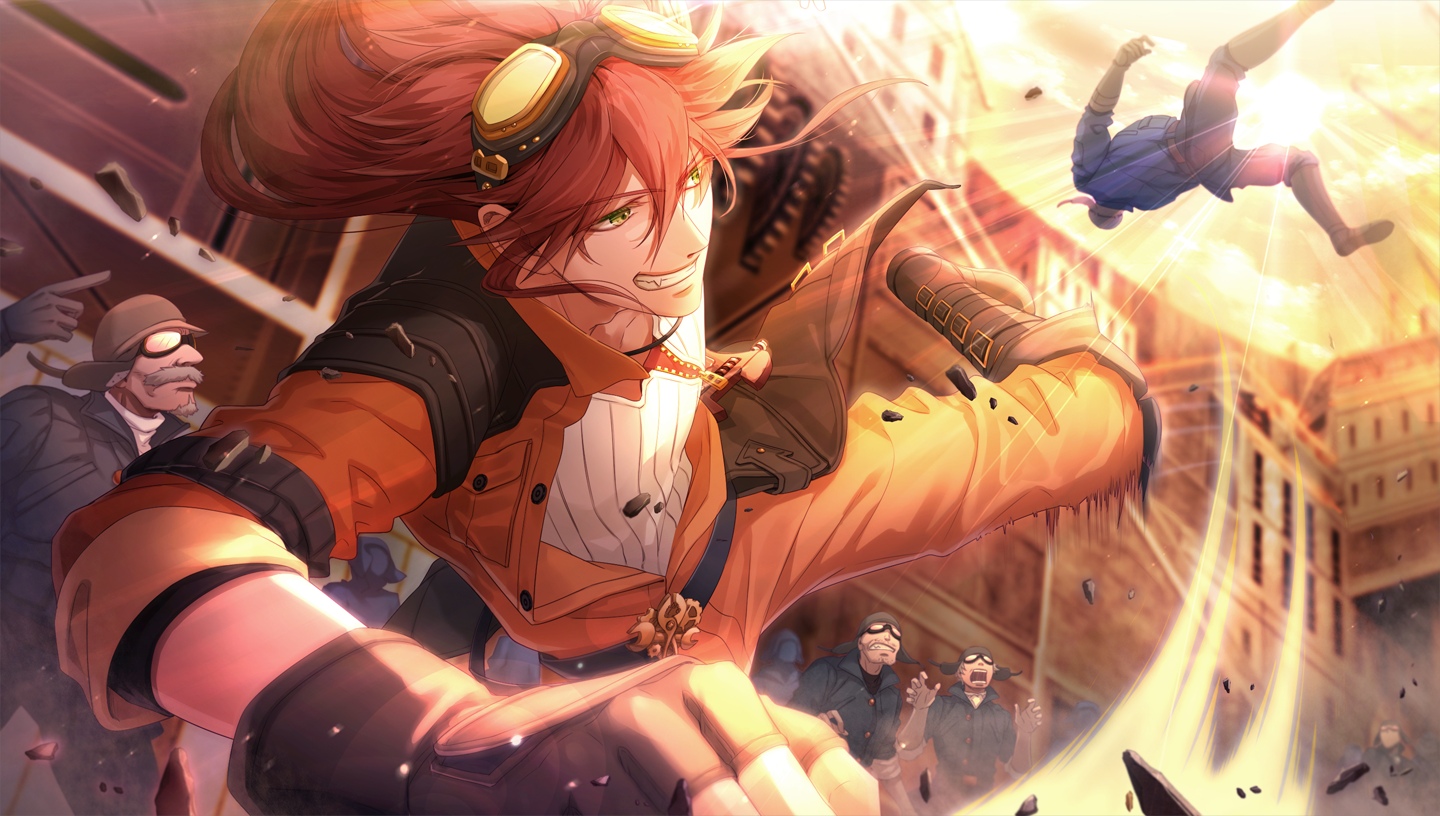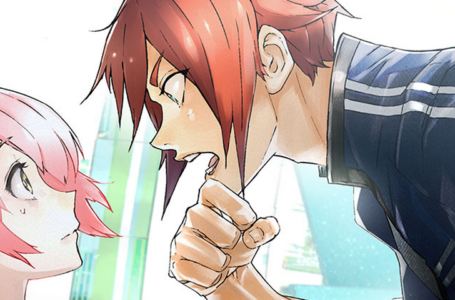Man v. Otome: I wish I’d learned to appreciate the “Auto” button sooner
It’s time for me to fess up, look a little sheepish and admit that despite my bold words, I still haven’t finished otome game classic Code: Realize. And once again I must reiterate that my failure to do so is nothing to do with the game’s quality: it is entirely to do with my own indecisiveness and tendency towards getting distracted away from visual novels by other games.
But this time I think I’ve nailed it. I really do, this time. On previous occasions when I’ve talked about making time for visual novels such as otome games, I’ve highlighted the importance of feeling that you’re able to fit them in around the other things you’re doing, because while there absolutely are some folks out there who are more than happy to make their entire “gaming” existence nothing but visual novels, dating sims and otome games, there are circumstances where this is undesirable or impractical. Such as, for example, when you’re the editor of a website about Japanese popular culture and surrounding phenomena.

While I have successfully managed to convince my brain to make time for Code: Realize on a number of occasions, I’ve found considerably more success with a slightly different strategy. Rather than — or perhaps more accurately, as well as — electing to read it during times when I might want to play more actively involved games, I’ve taken to making use of it as a form of media to enjoy during those times when I can’t enjoy regular games that require you to keep your hands on the controller.
Notably, I’ve taken to enjoying Code: Realize during mealtimes or other activities when my hands are otherwise occupied, but I’m still able to keep my attention on a screen. And it’s all thanks to a feature present in pretty much every visual novel ever, but which I haven’t historically made much use of: the “Auto” button.
The default way in which most visual novels and otome games work is for the player to be actively involved in advancing the story by pressing a “confirm” button after each line of text. This has a few functions: firstly, it makes the player feel like they’re actually “playing a game” rather than reading text, even in a kinetic novel with no choices to make. And secondly, it allows the player to enjoy the game at their own pace, advancing the story more quickly if they’re a fast reader and/or aren’t interested in hearing voice acted lines in full if they’re in a language they don’t speak.

The “Auto” button, conversely, allows you to take a completely hands-off approach to enjoying visual novels such as otome games — or even RPGs and adventure games with lengthy visual novel-style narrative sequences. Historically I’ve steered away from it because I wasn’t convinced it would be able to keep pace with my reading speed, which is rather quick, but I’ve discovered that with some tweaking of the settings available in most visual novels and otome games, it’s possible to set up a very comfortable “passive” experience in which you don’t feel like you’re left waiting around for things to happen for too long.
In my specific case when it comes to Code: Realize, the ideal settings appear to be maximising the speed of the Auto setting, which means that it automatically advances to the next line as soon as the voiced dialogue is complete (or after a couple of seconds in the case of unvoiced narration) while placing the speed at which the text appears on the screen somewhere slightly faster than the midpoint. In this way, the text gradually appears on screen, providing some visual interest for my eyes to follow and keep pace with, but there’s never a time when I’m left frustrated waiting for the next line to appear when I’ve been ready for it for several seconds.
The effect on my ability to enjoy the game while I’m doing other things has been immense. Now I can effectively enjoy this classic otome game like a “movie” of sorts, with my only required input coming at the points in the game where it’s necessary to make a decision. That means I can simply watch the game unfold while I’m eating dinner, working out at the gym or signing a stack of autographs.
And, in stark contrast to everything we’re told about video gaming needing to involve and immerse the player in order to be successful, I’m finding myself much more drawn into the story as a result — specifically because I’m not distracted by having to press a button every so often.
Some Code: Realize spoilers ahead.

With that in mind, in just the last week or so, I’ve managed to polish off Impey’s route in Code: Realize, and I’m presently probably about three quarters of the way through Van Helsing’s route. This is more progress in the game than I made in the entirety of last year, leading me to believe that I’ve most certainly found the magic formula for fitting otome games into everyday gaming life.
Which is good, because I have a whole bunch of otome games that have been mocking me from my shelf for a long time now, and as much as I love hanging out with Cardia and the gang, it’d be nice to move on to something else eventually. I hear Cupid Parasite is very good. But then, of course, there are also the two Code: Realize fandiscs.
Anyway, Impey’s route turned out to be a lot more spectacular than I was expecting. I’d somehow forgotten that while the common route of Code: Realize is relatively low-key, train heist and airship race notwithstanding, the individual character routes have a tendency towards the extremely, ridiculously overdramatic.
After all, Victor’s route concluded with Cardia being revealed to essentially be a ticking time bomb with the potential to wipe out people over a vast area, so I shouldn’t have been surprised when Impey turned out to be a vampire, and his nemesis Nemo was an absolutely batshit insane villain with a gigantic, physics-defying airship held up in the sky by a mystical gravity-reversing artifact developed by Impey’s vampiric former mentor.

Thus far, Van Helsing’s route has been similarly high-stakes. Just the first chapter of his route begins with Cardia having to face off against Code: Realize’s take on Jack the Ripper, with some surprisingly horrific and bloody scenes. And from there, we pick up on yet another tantalising narrative thread that was left dangling by the common route: the true identity and mysterious powers of Finis, the doll-faced boy who claims to be Cardia’s “brother”, and who very much appears to be blessed with immortality.
Thanks to that Auto button, I’m confident that I can now make it through the rest of Code: Realize in a rather more timely manner than I’ve previously talked about — particularly once I can coax my aching bones back to the gym, where I fully intend on using it to distract myself from lengthy cardio sessions — and I look forward to seeing how the remaining routes conclude.
And from there, as previously mentioned, I have a whole heap of other otome titles ready and waiting for me to experience for the first time, including classics like Collar x Malice and Piofiore to more recent hits like the aforementioned Cupid Parasite, BUSTAFELLOWS and plenty more besides
So if you’ve been struggling a bit like me, take my advice: the Auto button is your friend. Sit back and just enjoy the story like a movie rather than feeling pressured to turn it into “a video game”. You might just find you can fit more excellent narrative experiences into your life than you might think!
Join The Discussion
Rice Digital Discord
Rice Digital Twitter
Rice Digital Facebook
Or write us a letter for the Rice Digital Friday Letters Page by clicking here!
Disclosure: Some links in this article may be affiliate links, which means we may earn a small commission if you make a purchase after clicking on them. This is at no additional cost to you and helps support Rice Digital!
- Letter from the Editor: passing the torch - June 30, 2023
- Super Woden GP 2 is looking promising - June 30, 2023
- Inti Creates is making a 32 bit-style Love Live action platformer - June 26, 2023







